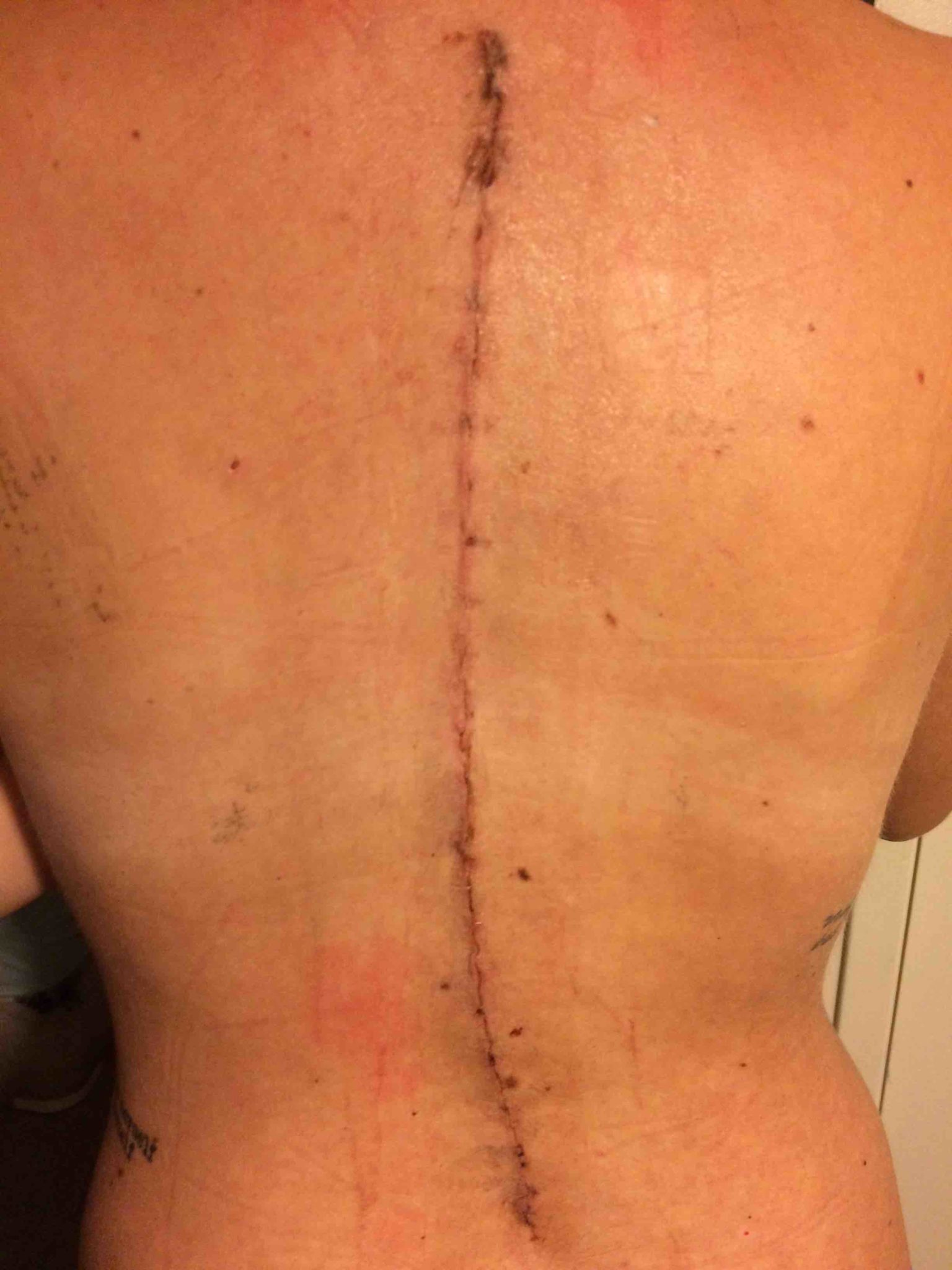Spinal Fusion Surgery in Higashicho
Search and Compare the Best Clinics and Doctors at the Lowest Prices for Spinal Fusion Surgery in Higashicho

Find the best clinics for Spinal Fusion Surgery in Higashicho
No pricing info available
Malaysia offers the best prices Worldwide
Price: $ 100
From 94 verified reviews
Hisanori Kakuma, 16 September 2020
Thank you for all the help you have given me
WHY US?
At Medijump, we're making medical easy. You can search, compare, discuss, and book your medical all in one place. We open the door to the best medical providers worldwide, saving you time and energy along the way, and it's all for FREE, no hidden fees, and no price markups guaranteed. So what are you waiting for?

Free

Best Price

Widest Selection

Risk-Free
What you need to know about Spinal Fusion Surgery in Higashicho

Spinal fusion surgery is a surgical procedure to connect two or more vertebrae in your spine so that they can heal into a single bone. The goal of the procedure is to correct problems within the vertebrae (such as to restore stability to the spine or to eliminate painful motion) as the bones will not move like they used to and keep you from stretching nearby ligaments, nerves, and muscles. The surgery is often recommended for people with back pain caused by degenerative disk disease, scoliosis, fracture, tumors, spine infection, spondylolisthesis, and spinal stenosis.
What does a Spinal Fusion Surgery Procedure Involve?
The procedure is performed under general anesthetic, the surgery begins with an incision in your abdomen (anterior lumbar interbody fusion) or in your back directly over your spine (posterior fusion) to access your spine. Then, your doctor removes the joint or joints between the painful or damaged disks. After that, the vertebrae are fused together permanently and kept from moving pieces of bone from another part of your body or a bone bank (called a bone graft). Screws, rods, or metal plates may be used to help hold the vertebrae together.
How Long Should I Stay in Higashicho for a Spinal Fusion Surgery Procedure?
You are required to stay in the hospital for two to seven days following your spinal fusion surgery. You should aim to stay in Higashicho for about eight to ten more days for initial recovery, follow-up checkup, and for the stitches to be removed.
What's the Recovery Time for Spinal Fusion Surgery Procedures in Higashicho?
Recovery from spinal fusion surgery can take as long as six to twelve months. If your job is not physically demanding, you may be able to get back to work and some of your activities within 3-4 months, but make sure you consult your doctor about your recovery timeline to avoid any complications.
What sort of Aftercare is Required for Spinal Fusion Surgery Procedures in Higashicho?
For the first six months following the surgery, you need to avoid bending, twisting, and heavy lifting. You will have physical therapy where you will learn how to move, sit, stand, and walk properly. You will also need to attend follow-up appointments after six weeks, six months, a year, or two years following your surgery, but you can do this with your local doctor. After you recover, you will need to maintain a healthy lifestyle, such as having regular exercise and following a healthy diet.
What's the Success Rate of Spinal Fusion Surgery Procedures in Higashicho?
Spinal fusion surgery is generally safe and effective. Approximately 80% to 95% of people who have spinal fusion are satisfied with the result and about 70% said that their pain is significantly reduced. However, as with any surgery, there are some potential side effects and risks, such as bleeding, blood clots, poor wound healing, infection, injury to nerves or blood vessels in and around the spine, pseudoarthrosis, tissue rejection, and risk from anesthesia.
Are there Alternatives to Spinal Fusion Surgery Procedures in Higashicho?
There are some alternatives that you can consider, such as artificial disk replacement surgery, Intradiscal Electrothermal Therapy (IDET), and posterior dynamic stabilization. Make sure you discuss with your doctor the best options for you.
What Should You Expect Before and After the Procedure
Before spinal fusion surgery, you may suffer from fractures, instability, or deformities in the spine and you may experience back or neck pain that limits your movement and mobility. After the surgery, the problem in your spine should be treated and any symptoms should be relieved, allowing you to return to your normal life.
Whilst the information presented here has been accurately sourced and verified by a medical professional for its accuracy, it is still advised to consult with your doctor before pursuing a medical treatment at one of the listed medical providers
No Time?
Tell us what you're looking for and we'll reachout to the top clinics all at once
Enquire Now

Popular Procedures in Higashicho
Prices Start From $3,084

Prices Start From $2,120

Prices Start From $200

Recommended Medical Centers in Higashicho for Spinal Fusion Surgery

- Interpreter services
- Translation service
- Religious facilities
- Medical records transfer
- Medical travel insurance
- Health insurance coordination
- TV in the room
- Safe in the room
- Phone in the room
- Private rooms for patients available

- Interpreter services
- Translation service
- Religious facilities
- Medical records transfer
- Medical travel insurance
- Health insurance coordination
- TV in the room
- Safe in the room
- Phone in the room
- Private rooms for patients available

- Interpreter services
- Translation service
- Religious facilities
- Medical records transfer
- Medical travel insurance
- Health insurance coordination
- TV in the room
- Safe in the room
- Phone in the room
- Private rooms for patients available

- Interpreter services
- Translation service
- Religious facilities
- Medical records transfer
- Medical travel insurance
- Health insurance coordination
- TV in the room
- Safe in the room
- Phone in the room
- Private rooms for patients available

- Interpreter services
- Translation service
- Religious facilities
- Medical records transfer
- Medical travel insurance
- Health insurance coordination
- TV in the room
- Safe in the room
- Phone in the room
- Private rooms for patients available

- Interpreter services
- Translation service
- Religious facilities
- Medical records transfer
- Medical travel insurance
- Health insurance coordination
- TV in the room
- Safe in the room
- Phone in the room
- Private rooms for patients available

- Interpreter services
- Translation service
- Religious facilities
- Medical records transfer
- Medical travel insurance
- Health insurance coordination
- TV in the room
- Safe in the room
- Phone in the room
- Private rooms for patients available

- Interpreter services
- Translation service
- Religious facilities
- Medical records transfer
- Medical travel insurance
- Health insurance coordination
- TV in the room
- Safe in the room
- Phone in the room
- Private rooms for patients available
Spinal Fusion Surgery in and around Higashicho
About Higashicho
Higashicho is an area in Koganei, a city located in the western part of Tokyo, Japan. Due to its ease of access to Tokyo and more affordable prices, Higashicho is frequented by tourists who wish to stay in a quiet and affordable accommodation than the ones in the center of Tokyo. Today, the area is also frequented by medical tourists looking for high-quality treatments in Japan. The clinics and hospitals in this area are known to have top quality services, reasonably priced treatments, state-of-the-art medical technology, as well as well-trained and licensed medical professionals.
Popular Parts of Higashicho
The most popular attraction near Higashicho is Koganei Park, which is a huge park with many different attractions. The park has free outdoor basketball courts, baseball fields, and tennis courts. It also has large open areas, perfect for those who want to go picnic or throw Frisbees. You can also find barbeque pits for rent. The park is also a good spot for plum blossom viewing in February and cherry blossom viewing in March. In fact, it is listed in the top 100 cherry blossom spots in Japan.
The park is also home to Edo-Tokyo Open Air Architectural Museum, a museum of historic Japanese buildings. This museum is a branch of the Edo-Tokyo Museum in Ryōgoku, Tokyo. The museum includes numerous buildings, from the middle-class ordinary Japanese houses to the homes of the powerful and wealthy, such as the residence of Takahashi Korekiyo, Japan’s former prime minister. In this museum, visitors can enter and explore various traditional Japanese buildings of different periods, styles, and purposes.
Transport in Higashicho
Since there is no international airport in Higashicho and Koganei, most international tourists arrive at the Narita International Airport. This airport serves domestic and international flights to numerous cities around the world.
Visas in Higashicho
Holders of passports issued by 66 countries, including all EU countries, Australia, the US, and the UAE, can visit and stay in Japan without a visa for up to 90 days. Most other countries not listed in the visa-free policy need to obtain a visa prior to arrival. Budget airlines, including Jetstar Japan, operates flights from this airport. Medical tourists can arrive in Koganei by train by taking the JR Chuo Line from Shinjuku west from thirty minutes, then take a taxi or bus to Higashicho.
Weather in Higashicho
Higashicho has four seasons. The summer (June to August) is hot and humid, with a lot of rainfall. Autumn (September to November) has mild weather with less humidity. November is the peak typhoon season. Winter (December to February) is dry, sunny, and cold, but the temperature rarely drops below 0°C. Spring (March to May) has pleasant weather and clear skies.
Additional Info
- Local Currency: Japanese Yen (JPY) is the local currency. 1 USD is approx. 106 JPY.
- Money & Payments: ATMs can be found around the area. Credit cards are not always accepted, so always bring cash with you. Tipping is not mandatory.
- Local Language: Japanese is the official language. English is not widely spoken, except in tourist areas.
- Local Culture and Religion: The main religion in the area is Shintoism and Buddhism. There is also a small group of Christian.
- Public Holidays: Emperor’s Birthday, Children’s Day, and Constitution Memorial Day are some of the public holidays celebrated in Higashicho.
Popular Searches
- Plastic Surgery in Thailand
- Dental Implants in Thailand
- Hair Transplant in Thailand
- Breast Augmentation Thailand
- Gastric Sleeve in Thailand
- Gender Reassignment Surgery in Thailand
- Laser Hair Removal in Bangkok
- Botox in Bangkok
- Dermatology in Bangkok
- Breast Augmentation in Bangkok
- Coolsculpting in Bangkok
- Veneers in Turkey
- Hair Transplant in Turkey
- Rhinoplasty in Turkey
- Stem Cell Therapy in Mexico
- Rhinoplasty in Mexico
- Liposuction in Mexico
- Coolsculpting in Tijuana
- Rhinoplasty in Korea
- Scar Removal in Korea
- Gastric Sleeve in Turkey
- Bone Marrow Transplant in India
- Invisalign in Malaysia
- Plastic Surgery in the Dominican Republic
- Tummy Tuck in the Dominican Republic
- Plastic and Cosmetic Surgery in Poland
- Rhinoplasty in Poland
- Hair Implant in Poland
- Dental Implants in Poland
- IVF in Turkey
